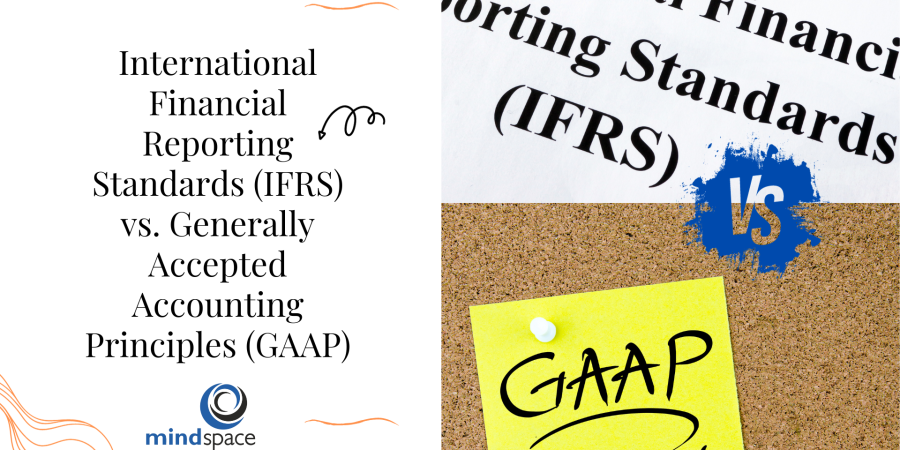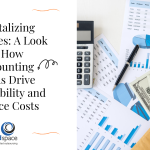International Financial Reporting Standards (IFRS) vs. Generally Accepted Accounting Principles (GAAP)
In the intricate world of finance, two giants stand tall, shaping the way companies report their financial information—International Financial Reporting Standards (IFRS) and Generally Accepted Accounting Principles (GAAP). As global business landscapes continue to evolve, the need for a common language in financial reporting becomes increasingly apparent. In this blog post, we’ll explore the key differences and similarities between IFRS and GAAP, shedding light on the implications for businesses and investors alike.
The Roots of the Giants
GAAP: A Domestic Foundation
Generally Accepted Accounting Principles, or GAAP, is the accounting standard adopted in the United States. Developed by the Financial Accounting Standards Board (FASB), GAAP provides a framework for financial reporting that ensures consistency, comparability, and transparency. Its origins can be traced back to the 1930s when the Securities and Exchange Commission (SEC) was established to regulate the securities industry and protect investors.
GAAP is a rule-based system, offering explicit guidelines and detailed rules for a variety of transactions. This specificity provides clarity but can also lead to complexity, especially in a rapidly changing business environment.
IFRS: A Global Aspiration
On the other side of the Atlantic, the International Financial Reporting Standards (IFRS) emerged as a response to the increasing globalization of business. The International Accounting Standards Board (IASB) is the driving force behind IFRS, striving to create a set of accounting standards that transcends national borders.
IFRS is principle-based, focusing on providing broad principles and guidelines. This flexibility allows for easier adaptation to different business environments but may also lead to differences in interpretation and application.
Bridging the Gap: Key Differences
1. Principles vs. Rules: The Core Philosophy
The fundamental difference between IFRS and GAAP lies in their underlying philosophy. GAAP is a rule-based system, offering detailed rules and guidelines for various transactions. This approach leaves little room for interpretation but can result in a rigid framework that struggles to keep up with the pace of change.
IFRS, in contrast, is principle-based. It provides a broader conceptual framework, allowing for more interpretation and adaptability. While this flexibility is an asset in a dynamic business environment, it can also introduce challenges in achieving uniformity in financial reporting.
2. Inventory Costing: A Methodological Divergence
One area where IFRS and GAAP diverge is in the treatment of inventory costing. Under GAAP, the Last In, First Out (LIFO) method is permitted, allowing companies to match the latest costs with revenue. However, IFRS prohibits the use of LIFO, requiring the use of the First In, First Out (FIFO) method or weighted average cost method. This discrepancy can lead to variations in reported earnings, impacting financial analysis and decision-making.
3. Development Costs: Capitalization or Expensing?
Another notable difference surfaces in the treatment of development costs. GAAP allows for the capitalization of certain development costs, enabling companies to spread these expenses over time. In contrast, IFRS is more conservative, generally requiring the immediate expensing of development costs. This variance can significantly impact financial statements, affecting profitability and financial ratios.
Harmonizing for Global Understanding
Despite these differences, the quest for a common financial language has led to ongoing efforts to converge IFRS and GAAP. The convergence aims to reduce disparities in financial reporting, making it easier for investors and stakeholders to compare companies operating in different jurisdictions.
1. Convergence Initiatives: A Step Towards Unity
The convergence initiatives between IFRS and GAAP have gained momentum over the years. Both standard-setting bodies, the IASB and FASB, have been actively working towards aligning their standards. The goal is to create a more consistent and globally accepted set of accounting principles.
2. Benefits of Convergence: Global Comparability
A converged set of standards offers several advantages. It enhances global comparability, making it easier for investors to evaluate and compare companies irrespective of their geographic location. This, in turn, promotes cross-border investments and facilitates a more transparent and efficient capital market.
Navigating Challenges: Implications for Businesses and Investors
1. Implementation Costs: A Hurdle for Businesses
While the convergence of IFRS and GAAP promises benefits in terms of global comparability, the transition comes with its challenges. Businesses may incur significant costs in adapting their accounting systems, processes, and personnel to comply with the new standards. This can be a substantial burden, particularly for smaller enterprises.
2. Investor Education: A Key to Informed Decision-Making
Investors play a crucial role in the success of convergence efforts. As financial reporting standards evolve, investors need to stay informed and educated about the changes. Understanding the nuances of IFRS and GAAP differences empowers investors to make more informed decisions and navigate the global financial landscape with confidence.
Conclusion: The Road Ahead
In the ongoing saga of IFRS vs. GAAP, the story is one of convergence, collaboration, and a shared vision for global financial reporting. While the journey is marked by challenges and complexities, the destination—a more interconnected and transparent financial world—is worth the effort.
As businesses and investors adapt to the evolving landscape, a unified set of accounting standards becomes increasingly essential. Whether it’s the explicit rules of GAAP or the broader principles of IFRS, the ultimate goal is a financial reporting framework that transcends borders, fosters comparability, and instills confidence in the global marketplace. The journey may be ongoing, but the destination holds the promise of a more cohesive and interconnected financial future.


